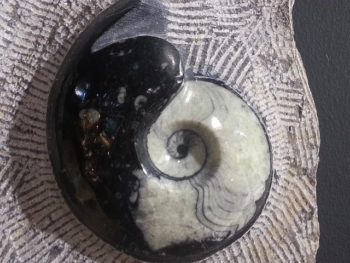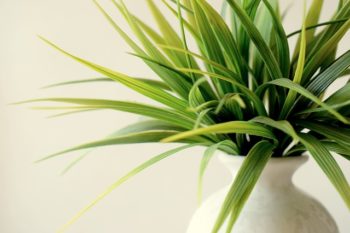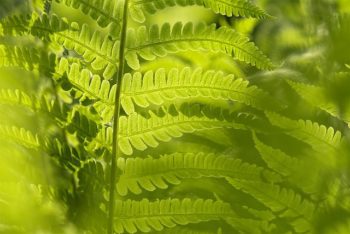 A DO-IT-YOURSELF FENG SHUI FIX
A DO-IT-YOURSELF FENG SHUI FIX
Hi Everyone and welcome to another WELLNESS WEDNESDAY. Today is all about FENG SHUI – a fascinating Chinese philosophy which attempts to harmonize human beings with their surrounding environment.
You see, this ancient art believes that everyone and everything is energy. And, the goal of Feng Shui is to teach us how to balance the energies in any given space – be it an office, garden or home – to ensure good fortune for those inhabiting the space.
Now, good fortune can refer to any number of different things. It can refer to health, finances, relationships and love, family or career. The practitioners of Feng Shui believe that success can be achieved in these different areas by shifting energy in a chosen space and establishing balance.
Of course, the philosophy of this art has evolved over 3,000 years. And, it could take us several years of study to even begin to understand the basics of the practice. At the very least, we would have to consult an expert in the field of Feng Shui to address and improve the energies in our living spaces.
Yet, there is one basic theme in Feng Shui that anyone can easily incorporate into their daily life without help from an expert. This is the Feng Shui belief that the indoor air we breathe must be free from as many pollutants as possible. After all, research shows that indoor pollution is typically much worse than outdoor pollution.
And, according to Feng Shui experts, the easiest way to clean the air in our living spaces is to decorate with plants.
So, you may be asking yourself, “exactly what kind of plants are they talking about?” And, we’ll answer this question with a little help from the United States’ National Aeronautics and Space Administration. That’s right! NASA put together a list of the top ten air-purifying plants based on research they conducted way back in the 1980s.
So, let’s combine the ancient philosophy of Feng Shui from the East and the modern scientific research of NASA in the West to bring you this list of THE TOP TEN AIR-PURIFYING PLANTS:
1) ARECA PALM. Scientific name Chrysalidocarpus Lutescens. This beautiful plant with the deep green and gracious leaves will soften any indoor space. It also has been shown to remove every indoor air toxin that has been tested. It’s hearty and easy to care for.
2) LADY PALM. Scientific name Rhapis Excelsa. This is another graceful plant that can easily grow in an indoor pot. Like the Areca Palm, the Lady Palm also removes most indoor pollutants, is pretty and popular, and easy to care for.
3) BAMBOO PALM. Scientific name Chamaedorea Seifrizii. This beauty adds a tranquil and tropical feeling to any room. It also removes formaldehyde, trichloroethylene and benzene from the atmosphere. This palm is fairly easy to care for and is quite resistant to insect infestation.
4) RUBBER PLANT. Scientific name Ficus Robusta. This plant does very well in cooler temperatures and dim light. Its broad leaves are waxy with a beautiful sheen. It removes most pollutants and is very affective in neutralizing formaldehyde.
5) DRACAENA JANET CRAIG. Scientific name Dracaena Deremensis Janet Craig. Another graceful plant that is easy to grow with very little light. It removes most pollutants – especially trichloroethylene – and is very helpful in removing home or office chemical toxins. Think kitchen cleaners, ink cartridges or glue.
6) ENGLISH IVY. Scientific name Hedera Helix. Now, here’s a plant with which everyone’s familiar. Its small green and white leaves work hard to remove most pollutants, especially formaldehyde. It’s easy to grow, very adaptable and a staple of many indoor public spaces.
7) DWARF DATE PALM. Scientific name Phoenix Roebelenii. Even though it’s called a “dwarf palm,” this plant can reach heights of five to six feet. It can tolerate low light and removes most pollutants, including xylene.
8) FICUS ALII. Scientific name Ficus Macleilandii Alii. There are lots of different species of Ficus, but this one is easier to care for than most. It comes in three varieties known as the standard tree, the braids and the bush. All effectively remove most indoor pollutants, especially formaldehyde.
 9) BOSTON FERN. Scientific name Nephrolepis Exaltata Bostoniensis. Now, this plant is one of the most common and popular in both homes and offices. Its lush leaves work hard to remove formaldehyde and other pollutants although it needs a little extra love to keep it healthy.
9) BOSTON FERN. Scientific name Nephrolepis Exaltata Bostoniensis. Now, this plant is one of the most common and popular in both homes and offices. Its lush leaves work hard to remove formaldehyde and other pollutants although it needs a little extra love to keep it healthy.
10) PEACE LILY. Scientific name Spathiphyllum sp. Here we have another beautiful plant that’s easy to care for and boasts graceful white flowers. It emits a strong and peaceful energy while removing trichloroethylene, benzene, formaldehyde, acetone and alcohols.
And, that’s all there is to it! This easy Feng Shui fix is something anyone can do to enhance the harmony of their living spaces. Plants are not only beautiful and decorative. They also can be hearty laborers that work hard to keep our indoor spaces filled with healthy, clean and fresh air. Take care of them and they’ll take care of you!
Thanks again for joining me everyone. Until next time stay in GOOD HEALTH and . . .
TAKE THE COURSE AND TAKE CHARGE!



Leave a Comment